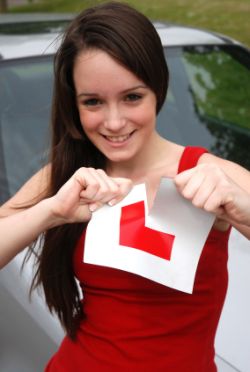What to do when you sell a vehicle
When you sell a vehicle, there are some things that you have to do straight away. As soon as the vehicle is sold you have to tell the DVLA, which stands for the Driver and Vehicle Licensing Agency, the date of sale using the registration document or certificate.
Note that if yourself, and indeed the buyer, don't follow correct DVLA procedure then the implications could potentially be serious, and indeed you would stay liable for the vehicle as this remains the case until the DVLA records are updated.
When you notify the DVLA using the official document or certificate, you should also independently store details of the buyer - their name and their address.
You should take your own tax disc off the vehicle at point of sale, and you can get a refund through the DVLA accordingly for months that remain on that tax disc. There are full details of all this on the DirectGov website under motoring that you should read in order to find the appropriate documents that you should fill in in the various scenarios, such as selling the vehicle to a motor trader or to a new private individual.
Once you have told the DVLA that you are no longer the owner of the vehicle, then you do get an acknowledgement back so that you know the DVLA is aware and has received your documentation. This usually happens within four weeks, and it will confirm that you are no longer liable for the said vehicle. If after four weeks you have not received this letter then you should contact the DVLA because you need to ensure that they have received the documentation as clearly it is important that if you have sold the vehicle that you are no longer liable for it.
Related Articles...
Thinking about a greener car
It is interesting to note that a signficant amount of the greenhouse gas emissions of the entire country comes from simply car travel: noticeably over 10% does.
Therefore if you have a type of...
What details to get at an accident
When you swap details with a driver, here are the things that you should be sure to obtain from the other driver:
You need to of course get their name, their address and a contact telephone...
Tips on buying a vehicle
When it comes to buying a car, many people buy second hand in order to save the costs of a new car which of course often come at a premium having had no previous owner.
However there are risks...
Working out what a road sign means
There are many signs that you will see day in day out as a driver and are obvious to understand. For instance signs that tell you the maximum speed limit on the road you're on. For some reason,...
Your steering system
When it comes to driving the car, it is safe to say that the steering wheel is clearly an essential part! If you can't steer your vehicle, then you clearly cannot drive it.
There are two...
Using emergency telephones
There are emergency telephones along motorways. There are telephones that occur roughly once per mile along the motorway which are connected to the emergency services.
There are also blue and...
Driving Theory Test
Until relatively recently in driving history, there was no theory test. From the time the first person passed a driving test in the UK in 1935 through to 1996, there was no separate theory test. ...
Oil in your car and oil pressure
Oil is not something that you might think is essential to the operation of a car, but infact it is. Oil acts as a lubricant for the moving parts such as the moving parts of the engine, and it is...
Selecting low gears when driving
When you are driving, you will just learn to change gears without really thinking about what you are doing and when. But generally you will change up gears the faster you are going, and this is...
When to use hazard warning lamps
Hazard warning lamps, are by their nature, lamps that you should not use routinely. However it is important to know when is the correct time to use them, and how to switch them on.
They are...
Back to home page of driving theory test questions

